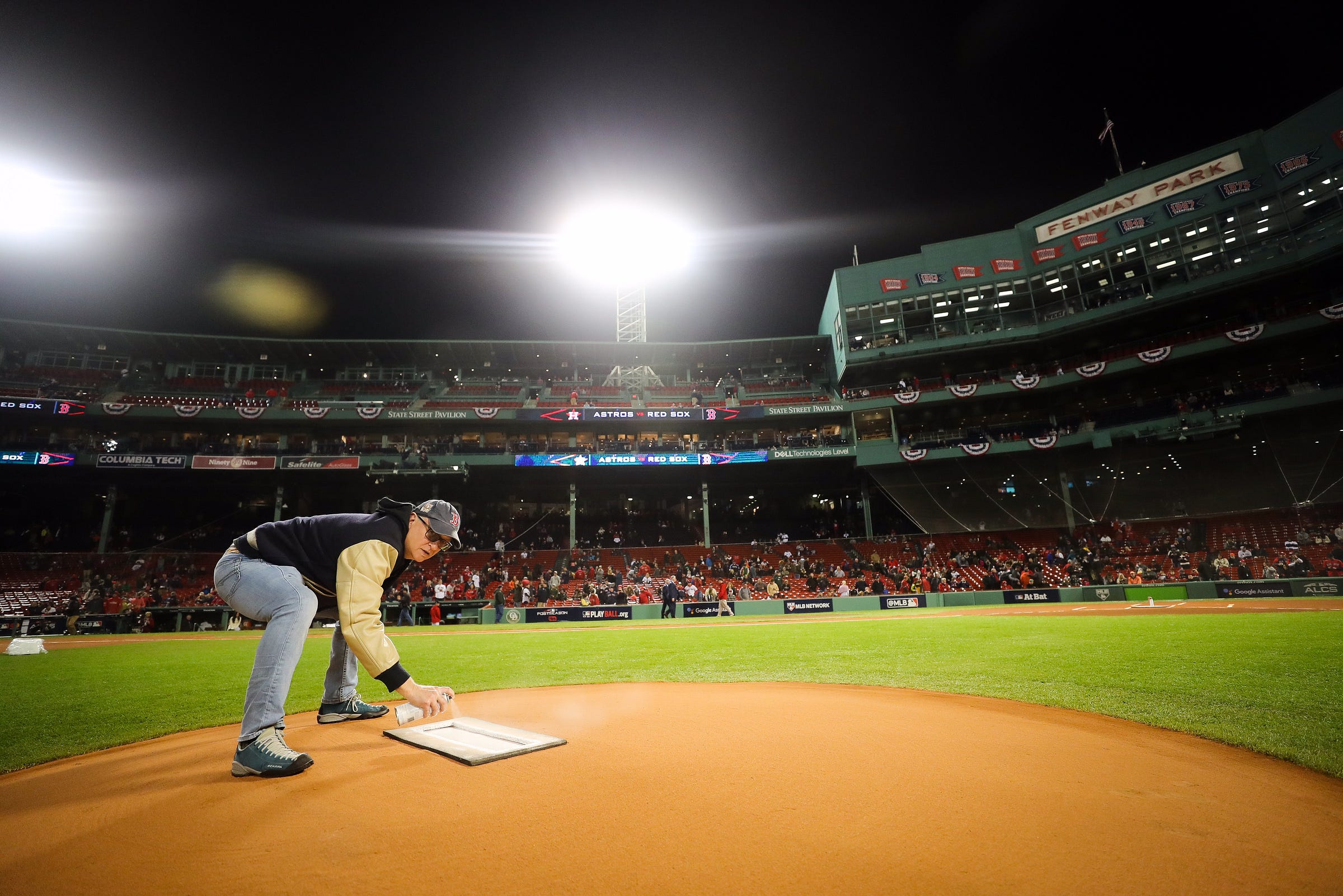The Toddfather: An Interview with the Great Todd Radom
When it comes to sports design, Radom’s done it all, from MLB uniforms to Super Bowl logos. We talked about his career, the current state of uniform design, and our longstanding friendship.

Reminder: Uni Watch’s time on Substack is coming to a close in late May. After that, I’ll be taking a break for at least a month, and then my Substack will relaunch at some point this summer with a new name and a new subject focus. To learn more about all of this, including what it will mean for those of you with paid subscriptions, look here. — Paul
If you’ve been reading Uni Watch with any regularity over the years, you probably have at least some idea of who Todd Radom is. But even if you don’t know his name, you definitely know his work. A small sampling of his design output over the past 30 years or so includes the following:
The Milwaukee Brewers’ mid-1990s uniforms.
The Washington Nationals’ inaugural uniform set.
The uniforms that the Los Angeles Angels have been wearing since 2002.
The logo for Super Bowl XXXVIII.
The Cleveland Browns’ first “dawg” logo (which was based on Radom’s own bulldog!).
Pretty much the entire visual program for the three-on-three basketball league BIG3.
Countless commemorative logos and patch designs, including the Sacramento Kings’ 100th-anniversary logo, “stadium final season” logos for the New York Mets and Detroit Tigers, the 2016 MLB All-Star Game logo, two different Jackie Robinson logos, and more.
Assorted special projects, like these premium season tickets for the Chicago White Sox.
And that’s just the tip of Radom’s creative iceberg. You can see a lot more of his work on his website.
In addition, Radom is a dogged researcher, a dedicated sports historian, and an articulate writer. In 2013, he uncovered the long-forgotten story of why the Los Angeles Dodgers have red front numbers on their jerseys — a major scoop that’s arguably as important as any of his design work. He’s also authored two uni-centric books: one about “ugly” MLB uniforms and another about NHL teams’ uniform and logo histories (co-written with SportsLogos.net’s Chris Creamer).
While most designers toil in relative anonymity, Radom has built a fairly public presence for himself. He’s a frequent guest on podcasts, a highly quotable voice in articles, and has even spray-painted the pitching rubber before an MLB playoff game. All of this has not only raised his own profile but has given more exposure and legitimacy to the world of sports design, for which he has become a de facto spokesman and ambassador.
I’ve known Radom for nearly 20 years, having first interviewed him in 2005 for ESPN. Since then, he’s become a good friend and a valued collaborator, designing assorted Uni Watch T-shirts, prints, and over two dozen pins. He’s also helped me out innumerable times with story tips and industry connections. It’s no exaggeration to say that Uni Watch would have been a much less successful enterprise without his friendship and support.
Radom and I are nearly exact contemporaries. We both recently turned 60 (he’s about three weeks older than I am), both grew up in the New York City suburbs (Yonkers for him, Long Island for me), and both care deeply about design. As I prepare to make my exit from Uni Watch, it seemed appropriate that I should do one last interview with him. He spoke to me last week from his home in Philadelphia, where he recently relocated after a long stretch in New York State’s Hudson Valley. Here’s a transcript of our conversation, edited for length and clarity.
Uni Watch: Let’s talk a little about how you got started. I know you went to the School of Visual Arts in New York, but was it always your goal to work in sports design and branding? Or is that just the direction your career ended up taking?
Todd Radom: Well, as you probably know, there really was not a template back then for pursuing a career in sports branding. But as for branding by itself, yes — I would say that by my senior year in college, I was all in on graphic design, with branding being a strong interest at that point, for sure.
UW: And then how did that interest get channeled into sports? Was it a gradual thing? Was there a particular moment that was your “big break”?




